And this is not all whom Emperor Hirohito killed...
https://allthatsinteresting.com/japanese-war-crimes
" Inside The Horrifying History Of Japanese War Crimes During World War II
Experts believe that at least 25 million people died in the Pacific Theater during World War II, with some of the grisliest deaths befalling Chinese civilians who were systematically tortured by the Imperial Japanese Army.
Many historical narratives of World War II focus on Europe. There, Nazis brought destruction across the continent, massacring millions of people. But Japanese war crimes were just as atrocious.
In the Pacific Theater, the Imperial Army of Japan terrorized people everywhere it went. The infamous Rape of Nanking resulted in the deaths of upwards of 300,000 Chinese civilians, as well as the rapes of between 20,000 to 80,000 girls and women. Secretive Japanese facilities like Unit 731 conducted gruesome medical experiments on prisoners and developed weapons using deadly diseases. And Allied POWs were often subjected to horrific torture and executions, in defiance of international law.
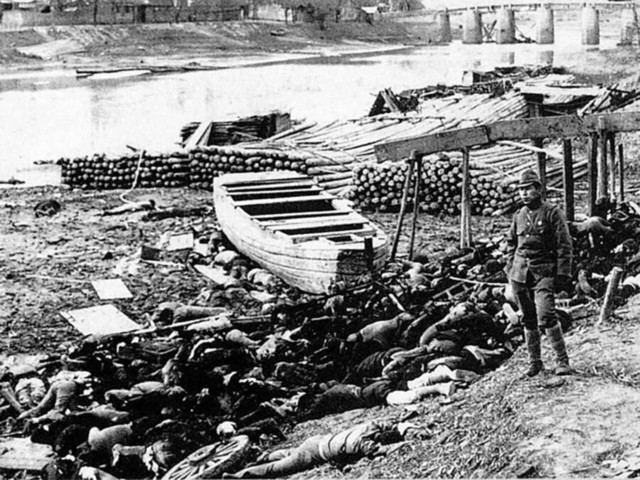
Public Domain Bodies line the Qinhuai River after the Rape of Nanking, one of the most infamous Japanese war crimes. Circa 1938.
After the war, some Japanese officers were tried as war criminals and executed.
But many others never faced justice for their crimes. And even in modern times, some politicians and other public figures in Japan either downplay or outright deny that these atrocities happened.
The Rape Of Nanking: One Of The Worst Japanese War Crimes
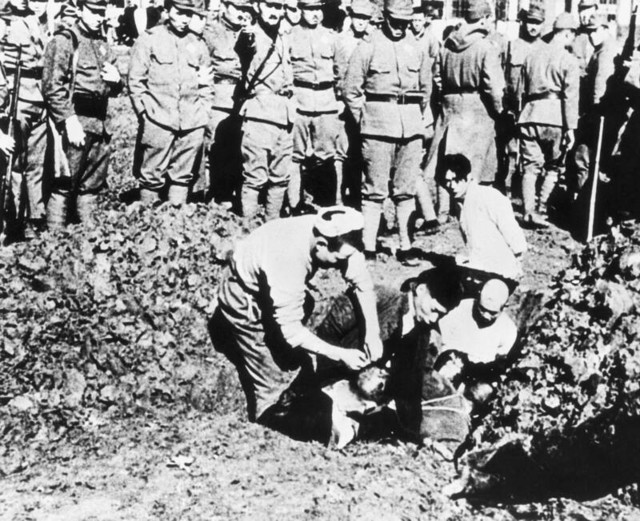
Bettmann/Getty ImagesChinese prisoners being buried alive by the Japanese during the Rape of Nanking.
In the summer of 1937, the Empire of Japan launched a full-scale ground invasion of China in an effort to permanently crush Chinese resistance. After the Japanese soldiers painstakingly conquered cities like Shanghai, they turned their attention to the nation’s then-capital: Nanking.
In December of that same year, Japanese troops arrived in the capital city, which contained about half a million civilians and 90,000 soldiers. The Japanese convinced the Chinese soldiers to surrender by promising them fair treatment. The soldiers agreed, and were promptly executed.
With the city undefended, the infamous Rape of Nanking began.
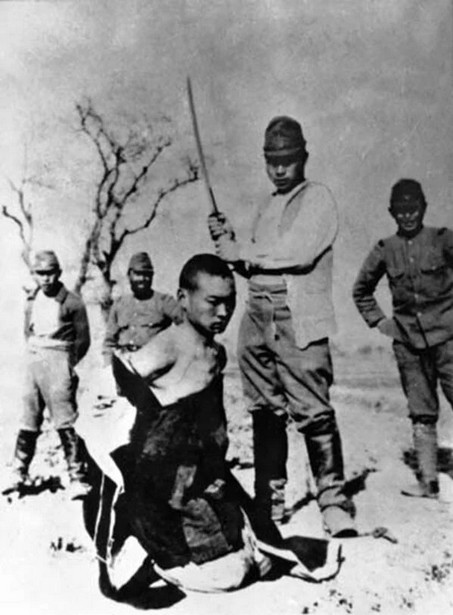
Pictures From History/Universal Images Group via Getty ImagesAn execution during the Nanking Massacre, which left upwards of 300,000 Chinese civilians dead.
Driven by the cold logic that they couldn’t feed captives, nor enter a long battle against guerrillas, the Japanese troops systematically killed nearly everyone in their sight. Newsweek reports that they flooded the city, shooting unarmed civilians, and went door to door to massacre any occupants.
Civilians were starved, burned alive, buried alive, and beheaded. Babies were bayoneted and tossed in boiling water. And tens of thousands of women and girls — estimates range from 20,000 to 80,000 — were brutally raped.
The Rape of Nanking was so horrifying that it even shocked some of the Nazis. German businessman John Rabe, the leader of a local Nazi Party that was stationed in China, was horrified by the violence that he witnessed and used his influence to help save an estimated 250,000 Chinese civilians. But hundreds of thousands of other civilians weren’t so lucky.
Though estimates vary, the Rape of Nanking resulted in the deaths of upwards of 300,000 Chinese people. That’s more than the total number of people who died in Hiroshima and Nagasaki — combined.
Japanese General Matsui Iwane, who ordered the destruction of the city, was later found guilty of numerous war crimes by the International Military Tribunal for the Far East. He was sentenced to death, but the grisly legacy of the Rape of Nanking continues to hang over Japan and China to this day.
Sex Slavery
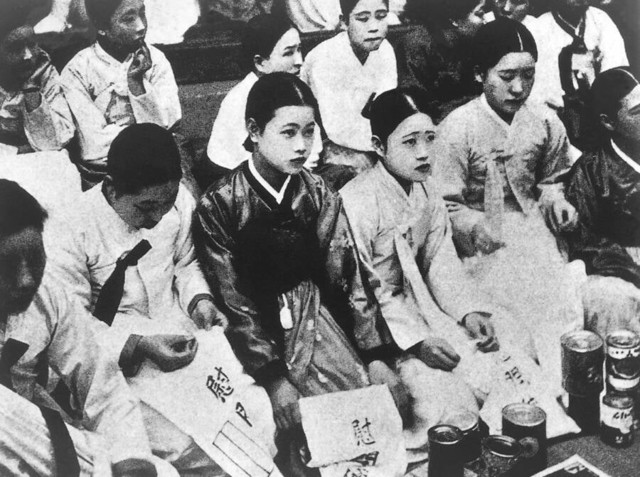
Pictures from History/Universal Images Group via Getty ImagesA group of “comfort women,” women and girls who were forced into prostitution by the Japanese during World War II.
As word of the Rape of Nanking spread, Japanese senior commanders grew concerned about the impact that it might have on Japan’s image. To discourage future mass rapes and to keep Japanese troops satisfied, they ordered the expansion of “comfort stations,” or military brothels.
HISTORY writes that women and girls across Japanese-occupied Asia — but mostly Chinese or Korean women and girls — were kidnapped, coerced, tricked, or sold into prostitution. Called “comfort women,” these enslaved victims were constantly raped by their captors and other soldiers.
“At first the other girls tried to protect me because I was so young,” Yong Soo Lee, a Korean victim who was kidnapped and forced into prostitution, told The Washington Post in 2015. “I saw the soldiers on them, but the girls put a blanket over me and told me to pretend I was dead so nothing would happen to me. I didn’t know what they meant. I was only 14.”

Pictures from History/Universal Images Group via Getty Images Victims of sexual slavery, pictured with a male soldier.
Though many documents relating to comfort women were destroyed after World War II ended — and their legacy remains a contentious issue between Japan and other Asian countries that were formerly occupied by the Japanese — historians believe that as many as 400,000 women and girls were likely forced into prostitution during the conflict.
According to HISTORY, about 90 percent of these victims died before the war ended of suicide, murder, or disease. The few remaining survivors who are still alive today have never fully recovered from the trauma.
“I never wanted to give comfort to those men,” Lee said. “That name was made up by Japan. I was taken from my home as a child. My right to be happy, to marry, to have a family, it was all taken from me… I don’t want to hate or hold a grudge, but I can never forgive what happened to me.”
Germ Warfare
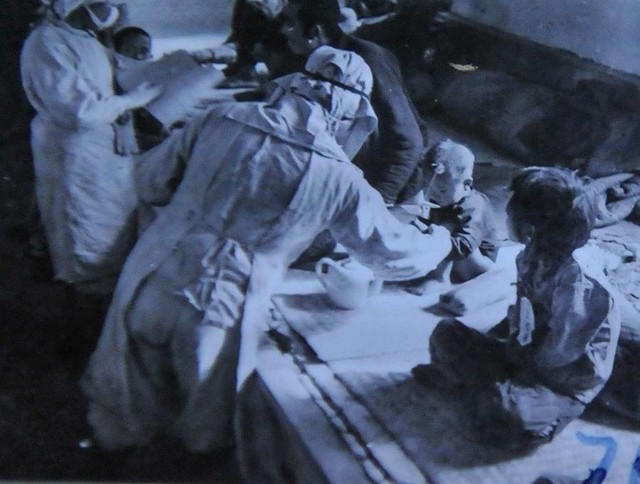
Xinhua via Getty Images
Researchers with Unit 731 conduct experiments on captive child subjects in China’s Jilin Province. November 1940.
Of all the Japanese war crimes, germ warfare was one of the worst. During World War II, Japanese units weaponized deadly diseases like the bubonic plague and knowingly released them onto Chinese civilians.
In the late 1930s, Japanese General Shiro Ishii established a medical facility near the Chinese city of Harbin (then part of the Japanese puppet state of Manchukuo.) Publicly, the facility was known as the Epidemic Prevention and Water Supply Unit. But Ishii had actually created the notorious Unit 731, which conducted a number of horrific medical experiments on civilians.

https://open.spotify.com/show/7s57UR52dTMdXZqXzDqpxc
Listen above to the History Uncovered podcast, episode 51: Unit 731, also available on Apple and Spotify.
The Guardian reports that Unit 731 conducted experiments meant to weaponize diseases. They gruesomely carried out vivisections of live prisoners to cultivate samples of typhoid, cholera, and other illnesses.
The unit also put together “bombs” that were filled with wheat, rice, or cotton — and fleas that were infected with the bubonic plague. When dropped on Chinese villages, these bombs released the infected fleas, which rapidly spread the devastating illness among civilians.
As many as 300,000 innocent people may have died from this germ warfare, but it took a long time for any sort of justice to be served. That’s because, after the war, the U.S. secretly granted immunity to Ishii and his collaborators in exchange for access to their inhumane research.
***
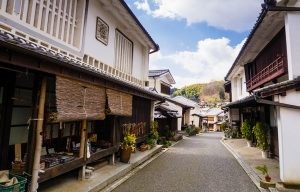
Nagoro: The Bizarre Japanese Village Where Dolls Replace The Deceased
***
It wasn’t until 2002 that a Tokyo court acknowledged that Japan had employed biological warfare during World War II, admitting: “The evidence shows that Japanese troops, including Unit 731 [the secret experimental unit] and others, used bacteriological weapons on the orders of the imperial army’s headquarters and that many local residents died.”
Cannibalism: One Of The Most Gruesome Japanese War Crimes

Wikimedia CommonsTwo Australian soldiers pose with human remains recovered from a Japanese encampment.
One of the grimmest Japanese war crimes was cannibalism. A shockingly large number of cases of Japanese cannibalism were documented during World War II, though it took a long time for them to come to light.
Japanese historian Toshiyuki Tanaka — whose work was initially deemed ″too sensitive” to publish in Japan — found more than 100 cases of Japanese Imperial Army soldiers cannibalizing enemy troops and civilians.
Though the Japanese soldiers were sometimes cut off from supply lines and starved, Tanaka found that they often had plenty of food. Rather, they cannibalized prisoners to celebrate a victory or to bond with their unit.
“I think it was to get a feeling for victory, and to give the soldiers nerves of steel,” Tanaka told the Independent in 1992. He added that it helped units bond “because the whole troop broke the taboo (of cannibalism) together.”
Tanaka wasn’t the only one to report on this grisly Japanese war crime. American and Australian soldiers also described encountering evidence of cannibalism when battling Japanese troops during World War II.
“The Japanese had cannibalised our wounded and dead soldiers… We found them with meat stripped off their legs and half-cooked meat in the Japanese dishes,” Australian Corporal Bill Hedges later said of the gruesome sight. “We found dumps with rice and a lot of tinned food. So they weren’t starving and having to eat flesh because they were hungry.”
One of the most infamous examples of Japanese cannibalism involving American soldiers came in September 1944, when a group of U.S. pilots were shot down during the bombing of Chichijima Island. Almost all of them were captured, tortured, and executed, after which the Japanese troops cannibalized their flesh in the so-called Chichijima Incident.
Only one of the downed pilots managed to evade capture and death that day — 20-year-old future U.S. President George H.W. Bush.
The Bataan Death March

The LIFE Picture Collection/Getty ImagesAmerican and Filipino soldiers during the Bataan Death March.
In April 1942, some 75,000 Filipino and American troops were forced to march 65 miles in excruciating conditions after surrendering to Japanese troops on the Bataan Peninsula in the Philippines. The so-called Bataan Death March resulted in the deaths of thousands of men — and stands as one of the most notorious Japanese war crimes of World War II.
The combined American and Filipino forces, part of the U.S. Army Forces in the Far East (USAFFE), had first met the Japanese in battle in December 1941, when Japan invaded the Philippines. With most of the U.S. forces preparing to enter World War II, however, the USAFFE found itself without air or sea support and on half rations during the deadly battle.
After fighting against the Japanese for a few months, the American and Filipino troops eventually surrendered in April 1942. Their Japanese captors then forced them on a 65-mile march to prison camps. But their goal wasn’t just to move their captives — it was to exterminate them.
“Whether they are destroyed individually or in groups, and whether it is accomplished by means of mass bombing, poisonous smoke, poisons, drowning, or decapitation, dispose of them as the situation dictates,” the Japanese War Ministry ordered, per HISTORY. “It is the aim not to allow the escape of a single one, to annihilate them all, and not to leave any traces.”

Department of Defense Prisoners during the Bataan Death March. At least 17,000 American and Filipino troops died during and after the march.
In the end, it’s been estimated that 17,000 to 27,000 Allied troops — most of whom were Filipino soldiers — died during and after the Bataan Death March. And many of them met extremely gruesome ends.
“One of the POWs had a ring on and the Japanese guard attempted to get the ring off,” remembered an American survivor. “He couldn’t get it off and he took a machete and cut the man’s wrist off and when he did that, of course, the man was bleeding profusely. [I tried to help him] but when I looked back I saw a Japanese guard sticking a bayonet through his stomach.”
After the war, Japanese Lieutenant General Masaharu Homma was found guilty of this war crime and sentenced to death.
The Torture And Execution Of Allied POWs

Universal History Archive/Universal Images Group via Getty ImagesA captive U.S. pilot, blindfolded by Japanese captors. 1942.
Though the Geneva Convention had already established protections for prisoners of war, the Japanese often flouted these rules. Over the course of World War II, they frequently tortured and executed Allied prisoners.
As History Collection reports, Allied POWs were subjected to torture like being forced to drink copious amounts of water until they lost consciousness. Someone would then jump on their abdomen, forcing the water out. There were also accounts — unproven — of the Japanese tying POWs onto beds of sharp bamboo, which grew quickly and impaled them.
Allied POWs were also sometimes subjected to gruesome medical experiments. They were injected with horse blood or seawater, or left to freeze so that Japanese doctors could study the impact of frostbite. Usually, these “experiments” were nothing more than prolonged executions.
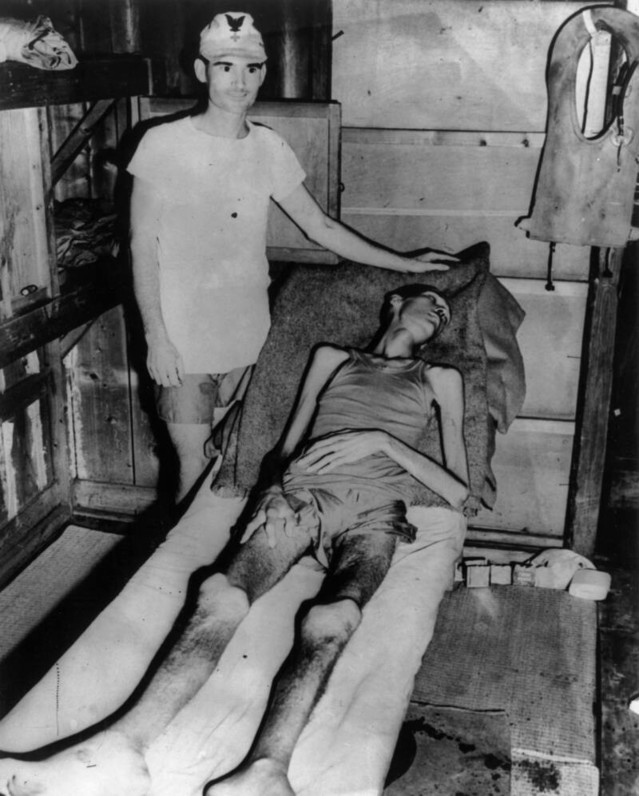
Keystone/Getty Image sAn emaciated prisoner of war rescued from a Japanese prison camp. September 1945.
Indeed, many POWs were summarily massacred.
“Four of our group escaped,” Tech. Sgt. Richard Henry Peterson said, per the U.S. Army. “I — along with three other men — was taken to the Japanese commander. He alternated [between] questioning and beating us with a belt and a bamboo stick from 8 in the morning until 3 in the afternoon. The four of us denied knowing anything about the escape. Actually, we knew everything. We were finally taken back to our compound and the guards took our four top officers to the commander. We saw a Jap firing squad take them out of sight and heard the shots as they were executed.”
As the Allied victory grew ever more certain, scores of POWs were executed. In Puerto Princesa in the Philippines, 150 POWs were doused in gasoline, set on fire, and shot by machine guns. Just 11 men survived that massacre.
Later on, a number of Japanese officers were found guilty of war crimes because they’d approved the torture and execution of Allied POWs. However, many of them eventually received pardons.
Pearl Harbor: One Of The Most Infamous Japanese War Crimes

US Navy/Interim Archives/Getty Images
Smoke billows from American battleships during the Japanese attack on Pearl Harbor.
Perhaps the most notorious of all Japanese war crimes is the December 7, 1941 attack on Pearl Harbor in Hawaii. Then, Japanese planes appeared without warning and bombed much of the U.S. Pacific Fleet. They damaged or destroyed nearly 20 of the United States’ vessels — as well as 300 airplanes — and killed 2,400 American soldiers and civilians.
The attack, which drew the United States into World War II, was a war crime because the Japanese didn’t give any warning in advance.
As PearlHarbor.org notes, the 1907 Hague Convention clearly stated that any attack launched “without previous and explicit warning” was against international law. And the Kellog-Briand Pact of 1928, which both the U.S. and Japan had signed, further stated that an act of war like Pearl Harbor should not be used to resolve “disputes or conflicts of whatever nature or of whatever origin they may be, which may arise among them.”

Time Life Pictures/National Archives/The LIFE Picture Collection/Getty Images
A sailor runs for cover during the attack on Pearl Harbor.
As it turned out, the Japanese actually had prepared a warning for the U.S. But it wasn’t delivered until after the bombing had taken place. According to the Franklin D. Roosevelt Presidential Library and Museum, this was because of delays in translating and typing up the message. American officials didn’t receive it until well after the attack had started.
After reading about the horrific Japanese war crimes of World War II, learn about the World War II myths that people need to stop spreading. Then, have a look at the worst U.S. war crimes committed during World War II.
After the war ended, the Tokyo War Crimes Trials found that the attack on Pearl Harbor had been illegal, and a number of high-ranking Japanese officials were charged with murder and crimes against peace.
Kommentit